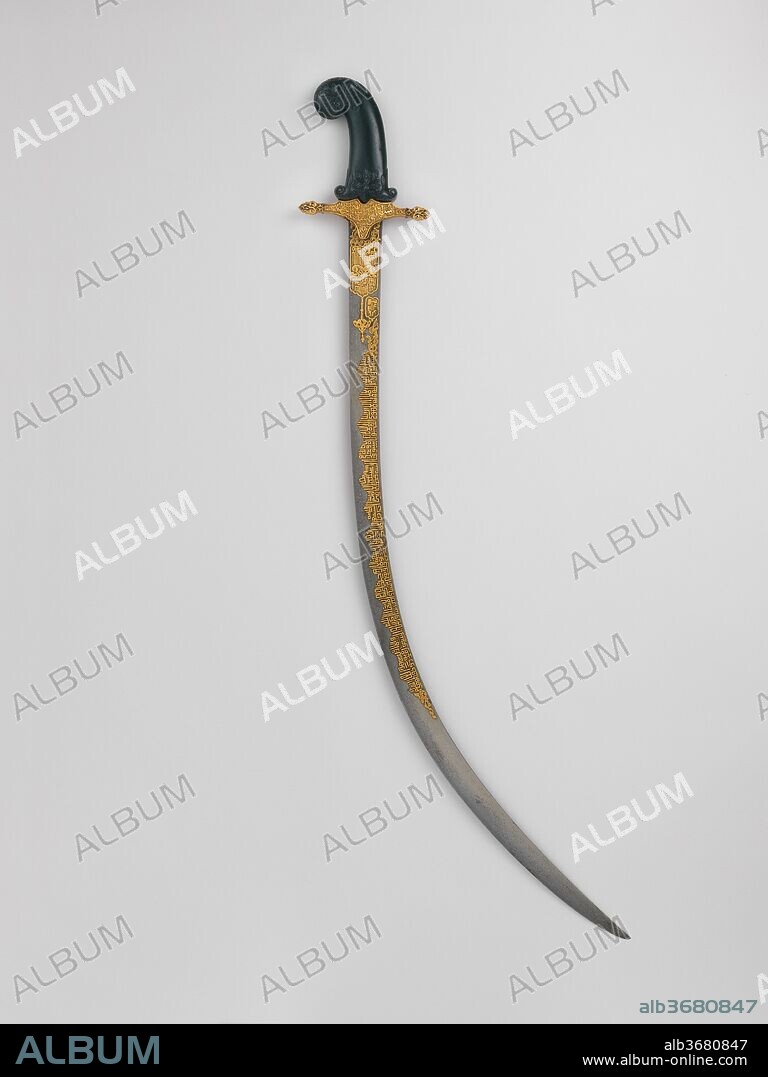alb3680847
SABER

|
Add to another lightbox |
|
Add to another lightbox |



Title:
SABER
Caption:
Saber. Culture: blade and guard, Turkish; grip, Indian; blade, possibly Iranian. Dimensions: L. 36 7/8 in. (93.7 cm); L. of blade 30 5/8 in. (77.7 cm); Wt. 2 lb. 1 oz. (935.5 g). Date: blade and guard, 19th century; grip, 18th century.
Swords are appropriated through the recycling of materials and as spoils of war. Therefore it is no surprise that this sword has a precious Mughal grip made of black jade and a gold Ottoman guard that reads in naskhi script: "Sultan son of Sultan son of Sultan son of Suleiman Khan"; and on the back: "the name of God most compassionate and merciful." Although the name of an Ottoman sultan appears on the guard, it is not an indication of the provenance of the sword.
Islamic devotional inscriptions dominate the decorative motifs of arms and armor. Efficacious prayers protect the soldier from the evils of war. The inscriptions on the elegant steel blade indicate the sword's talismanic function. In square kufic script, the inscriptions state the proclamation of faith along with the valuable Qur'anic Throne verse (2:255), all damascened in gold. The back of the blade, in gold, is stamped with the Seal of Solomon (a six-pointed star) and various cartouches invoking the name of God.
Technique/material:
Steel, jade (nephrite), gold
Museum:
Metropolitan Museum of Art, New York, USA
Credit:
Album / Metropolitan Museum of Art, NY
Releases:
Model: No - Property: No
Rights questions?
Rights questions?
Image size:
3151 x 4200 px | 37.9 MB
Print size:
26.7 x 35.6 cm | 10.5 x 14.0 in (300 dpi)
Keywords:
 Pinterest
Pinterest Twitter
Twitter Facebook
Facebook Copy link
Copy link Email
Email

